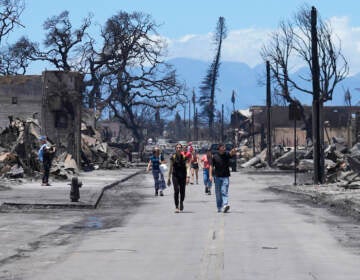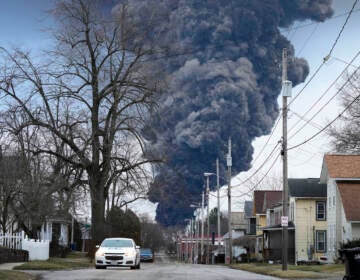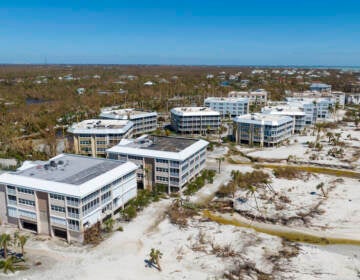At least 8 dead as tropical storm Florence moves west through the Carolinas
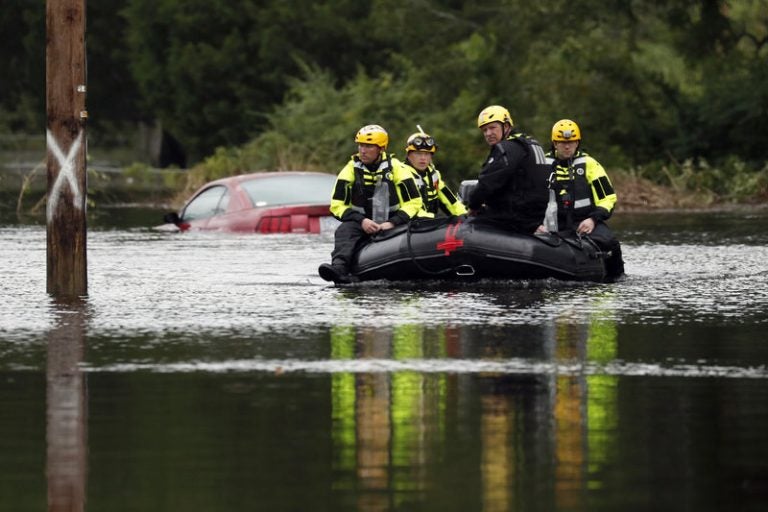
Members of a swift water rescue team check a flooded street caused by the tropical storm Florence in New Bern, N.C., on Saturday. Rescuers have pulled more than 200 people from their homes to safer ground as of Saturday morning in New Bern. (Chris Seward/AP)
Updated 3:38 p.m. ET
A slowing Tropical Storm Florence continues to creep along the Carolinas on Saturday. Its westward motion is expected to continue through the day. At least eight deaths are connected to the storm and that number is expected to climb.
Florence “will continue to track slowly inland through the Carolinas this weekend,” the National Weather Service said in its 11 a.m. update Saturday. “Life-threatening, catastrophic flash floods and prolonged significant river flooding are likely over portions of the Carolinas and the southern to central Appalachians from western North Carolina into southwest Virginia through early next week.”
“A turn toward the west-northwest and northwest is expected on Sunday,” said the agency. “Florence is forecast to turn northward through the Ohio Valley by Monday.” The storm is currently about 40 miles west of Myrtle Beach, S.C., and 40 miles south of Florence, S.C.
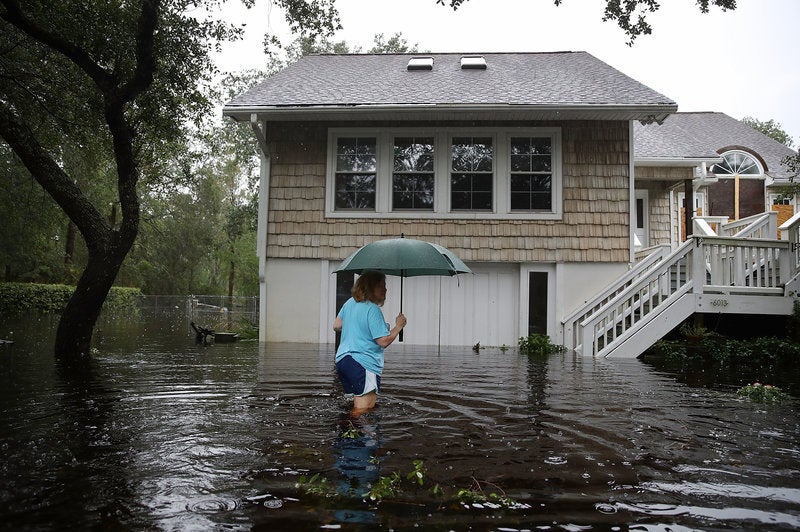
(Joe Raedle/Getty Images)
Florence came ashore more than 24 hours ago. The tropical storm’s maximum sustained winds have decreased slightly, from 50 mph to 45 mph, with higher gusts in heavy rainbands over water, the NWS said. It continues to chug west, slowing down from 5 mph to 2 mph. That means its torrential rains will be felt harder.
This main threat — flooding — is coming into focus. Rains have been relentless, and Florence continues to dump a “catastrophic” amount of water in its path. The town of Newport, N.C., reported a rainfall total of almost 24 inches as of midnight Saturday.
The NWS says southern and central portions of North Carolina into far northeast South Carolina are expected to report an additional 10 to 15 inches of rainfall — with storm totals between 30 and 40 inches along the coastal areas south of Cape Hatteras. These rains are expected to produce “prolonged, significant river flooding.”
“Residents should not let their guard down,” North Carolina Emergency Management tweeted.
Tropical Storm Florence morning update: Portions of eastern NC have already received 10-25” of rain, with additional heavy rain expected. Some rain bands include rainfall rates of 2-3” per hour leading to dangerous flash flooding. Residents should not let their guard down. pic.twitter.com/9BpNujwseY
— NC Emergency Managem (@NCEmergency) September 15, 2018
The rest of South Carolina into western North Carolina and southwest Virginia is expected to report 5 to 10 inches of additional rainfall, with isolated cases of 15 inches.

Parts of West-central Virginia and far eastern West Virginia will see “life-threatening flash flooding and river flooding, along with an elevated risk for landslides,” according to the agency. These areas will see 3 to 6 inches of rainfall, with isolated cases of 8 inches.
Surfers, beware: Florence has also generated “life-threatening swells” affecting Bermuda, portions of the U.S. East Coast, and the northwestern and central Bahamas. “These swells are likely to cause life-threatening surf and rip current conditions,” the NWS says.
The coroner of Union County, S.C., William Holcombe, confirms to NPR that 61-year-old Amber Dawn Lee died in a traffic accident. Her vehicle struck a tree that had fallen across a roadway. Officials say the tree fell due to the winds caused by Hurricane Florence. Hers is the first death in South Carolina blamed on the storm.
In a Facebook post, the sheriff of Duplin County, N.C. says two people died due to “flash flooding and swift water on roadways.”
At least five other deaths are connected to the storm, as NPR has reported.
“On Friday, a woman and infant were killed in Wilmington, N.C., when a tree fell on their home, according to the local police department. Another victim of the storm — a 78-year-old man — died in North Carolina while plugging in a generator, the state’s governor says.
“A second man, 77, in Lenoir County, appears to have been killed by a gust of wind that knocked him to the ground when he was checking on his hunting dogs.
“In Hampstead, N.C., a woman had a heart attack and debris in the roads prevented emergency responders from reaching her to provide care, a dispatcher confirms to member station WUNC.”
Nearly a million residences in Florence’s path are out of power, with 759,017 in N.C. and 163,029 in S.C., according to poweroutage.us.
Over 900k customers are currently without power from #HurricaneFlorence. 765k out in #NorthCarolina and 136k out in #SouthCarolina. Utilities from all over the nation are sending in crews to help get power back on! Check out https://t.co/kJ0OPcOSrS for #PowerOutage details! pic.twitter.com/T86Rq82Jef
— PowerOutage.us (@PowerOutage_us) September 15, 2018
FEMA has rolled out a “rumor-control webpage” to combat misinformation and unfounded rumors. Contrary to whispers, “all service animals are allowed in shelters,” reads one post. “FEMA does not have authority to issue or enforce evacuation orders,” reads another.
In New Bern, N.C., a town that sits between two rivers, rescuers have pulled more than 200 people from their homes to safer ground, as of Saturday morning.
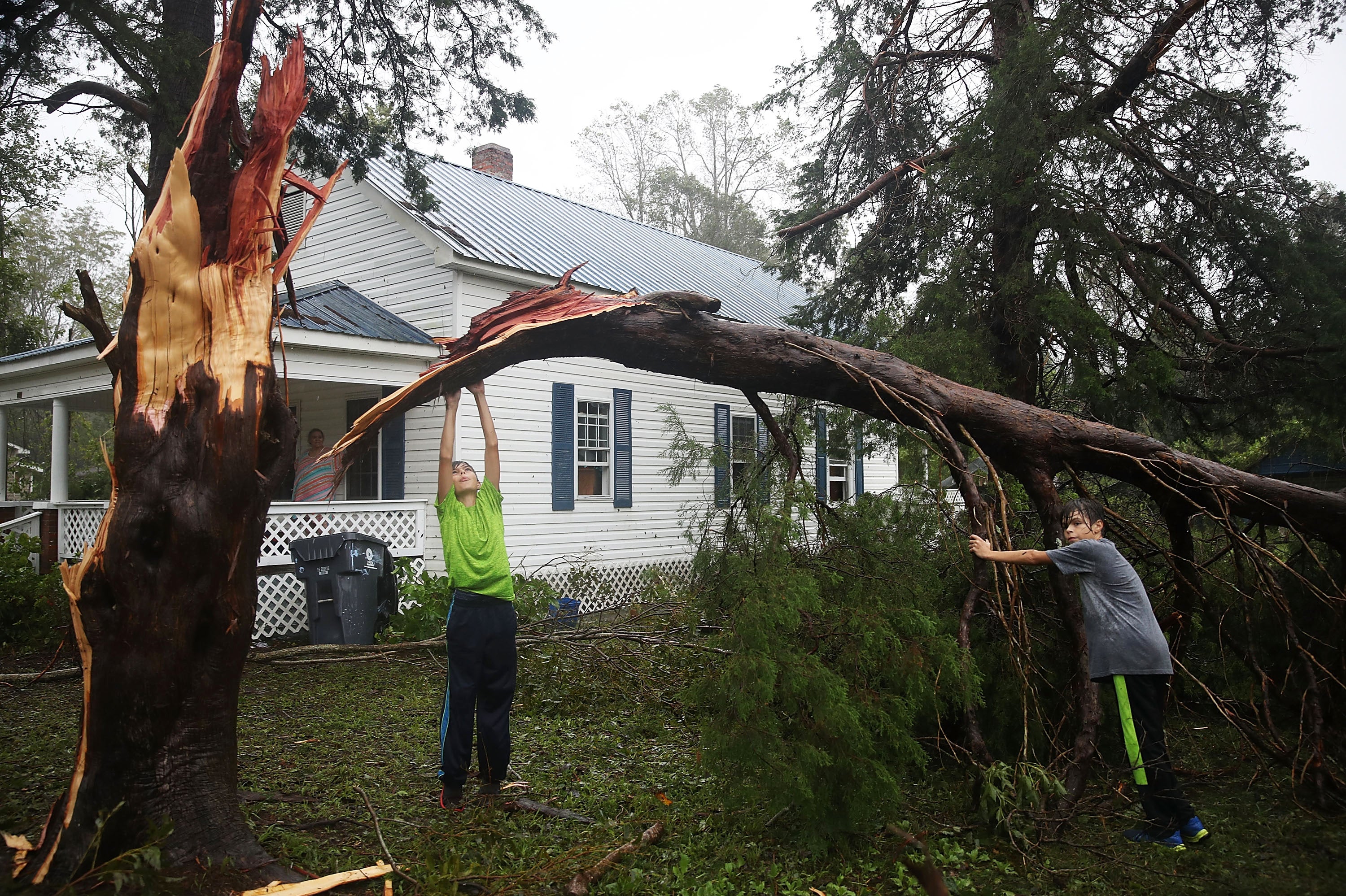
Dana Outlaw, the town’s mayor, told NPR there had been 1,200 requests to 911 on Friday in 12 hours. “That’s very unusual. … We did everything we could to make residents aware of how dangerous this storm was going to be,” she said. Craven County, where New Burn is located, issued a mandatory evacuation order.
Craven County, where New Bern is located, issued a mandatory evacuation order.
NPR’s Brakkton Booker reports that much of the city remains under water. Some neighborhoods are only accessible by boat. Some residents stayed despite Tuesday’s evacuation order, unable to afford hotels or transport elderly family members.
“Some underestimated Florence,” Booker said.
Rescue teams from Texas to Massachusetts — including the famed Cajun Navy — are assisting with rescue efforts.
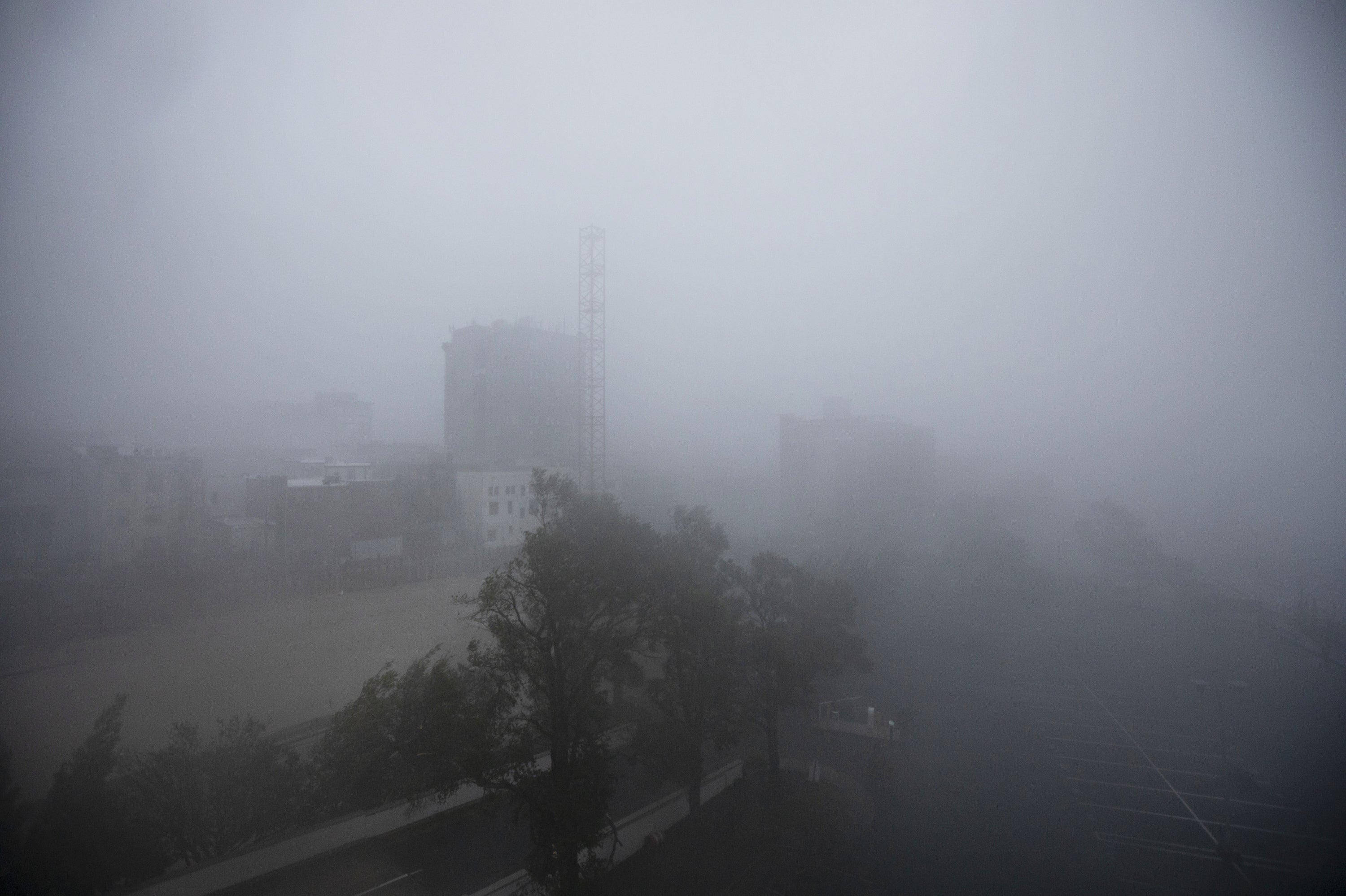
Florence is enormous, slow and very, very wet. Storms get those qualities from warm ocean water and weak wind currents that allow them to suck up moisture and come to a gradual halt over land, dumping water everywhere. Florence is the kind of storm likely driven by climate change.
“For people in Florence’s path, that means a more drawn out and exhausting hurricane experience,” report NPR’s Rebecca Hersher and John Poole.
“Across South Carolina on Friday, at least 5,500 people were staying at 59 Red Cross shelters, ” they report. “And Florence’s plodding progress means they, and potentially many more, could be stuck sleeping among strangers for days more.”
9(MDAzMzI1ODY3MDEyMzkzOTE3NjIxNDg3MQ001))


